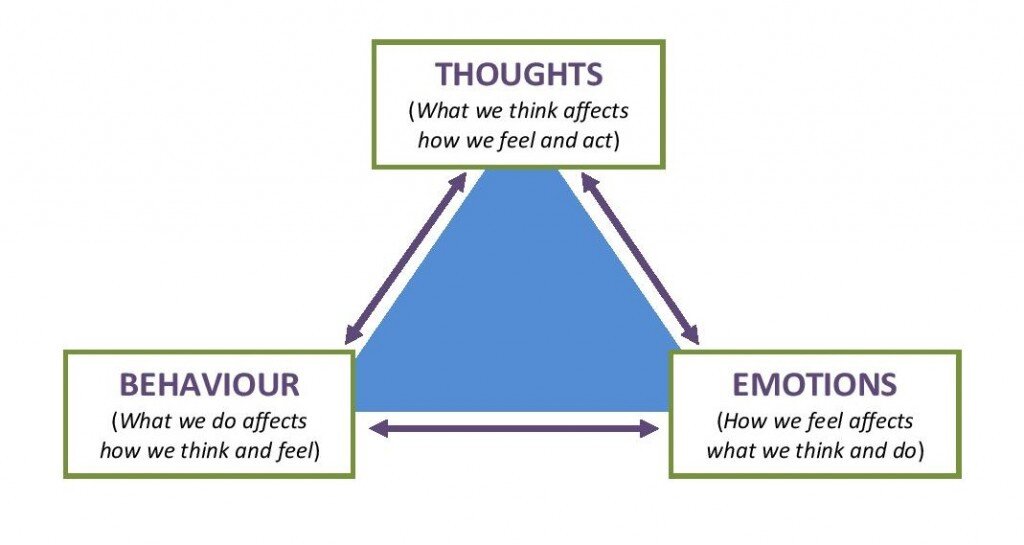Thoughts, Feelings, and Behaviors
Have you ever noticed that when you are feeling sad, you tend to think negatively, and then when you think negatively you begin to behave in a way that keeps you sad and thinking unhelpful thoughts (eg. isolating)? or Have you ever noticed when you are feeling happy, you tend to think positively, and then you engage in activities you enjoy? Well, this is due to the influence our thoughts, feelings, and behaviors have on one another.
The Cognitive Behavioral Model uses a CBT triangle to help many us understand the cycles our thoughts, feelings, and behaviors can be involved in. At the end of the blog I have attached a visual for you to see how these three aspects coincide in a continuous cycle.
Our thoughts and behaviors are typically easier to control compared to our feelings, but luckily for us if we are able to change our maladaptive thoughts or behaviors we will be able to change the way we feel due to the influence they each have on one another. Below I will give an example of how you can begin to work on interrupting a negative cycle you are in.
It is first important to catch the way we are thinking. If you find yourself thinking badly about yourself or the situation you are in, acknowledge those negative thoughts. Once you have acknowledged them consider reframing those thoughts or replacing them with positive ones. This is extremely hard to do, but gets easier with practice. So, for example, if you are thinking you are not good enough, think about (or write out) 5 things you are good at and 5 things that you like about yourself (as many times as you need). This will help stop those self-defeating thoughts for at least a few moments and release the intensity of your negative feelings. For instance, if you were originally feeling sad and worthless when you were thinking you were not good enough, you will likely feel happier when you start to think about the good things about yourself. Feeling less sad and thinking more positively about yourself, will in turn help change any maladaptive behaviors you maybe doing. For example, if you are feeling happier, and thinking positively, you are likely to stop a behavior like isolating and have a stronger desire to spend time with friends or do a pleasurable activity .
Like I said, intervening in this cycle can be very difficult, which is why I recommend people to reach out to their therapist or us here at Bridge the Gap Services if they recognize they are spiraling into unwanted territory due to a negative thought, feelings, and behavior cycle. Below I have listed just a few tools that you can try on your own.
Positive self-talk or journaling
Reframing your thoughts into positive ones
Putting more effort into doing pleasurable activities
Create a weekly self-care chart
Question your thoughts and ask yourself if they are valid
Exercise (to stimulate endorphins, dopamine, norepinephrine, and serotonin, which helps with mood)
Calling a friend or family member when you are spiraling in negative thoughts that are making you feel upset
Setting up an appointment with a mental health professional (it is okay to ask for help!)
https://medium.com/real-life-resilience/the-cognitive-triangle-bdc4eb08a4f5

